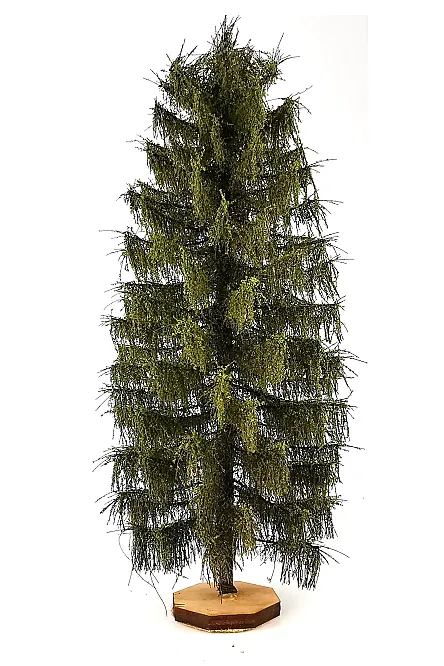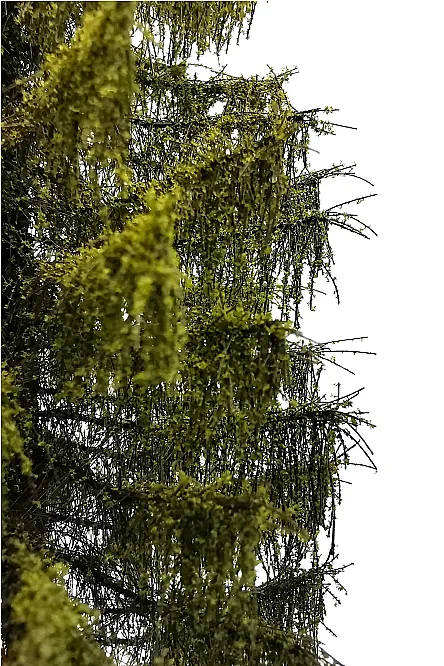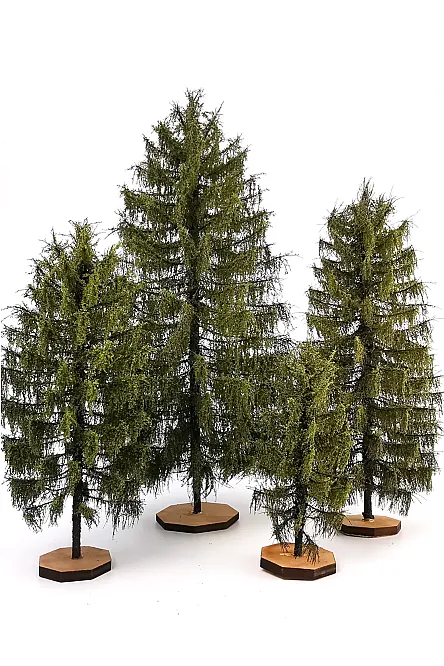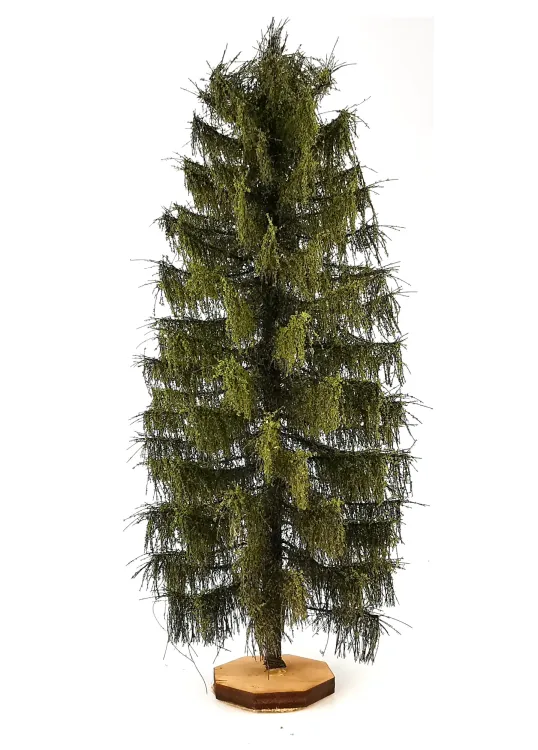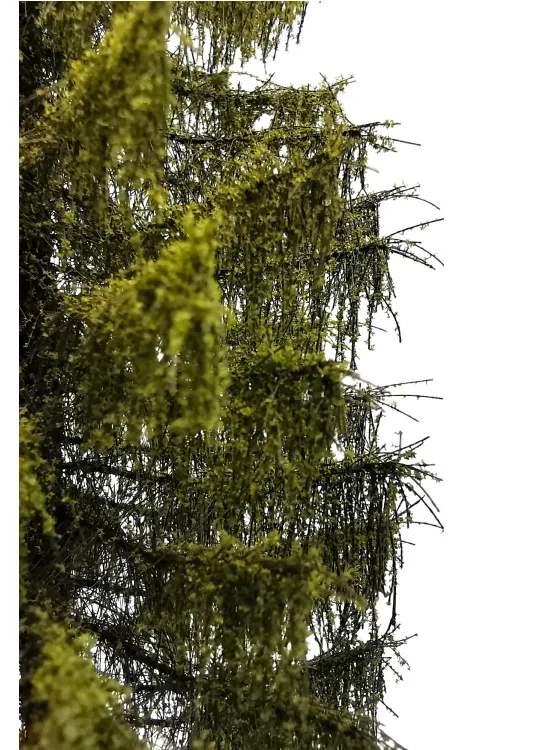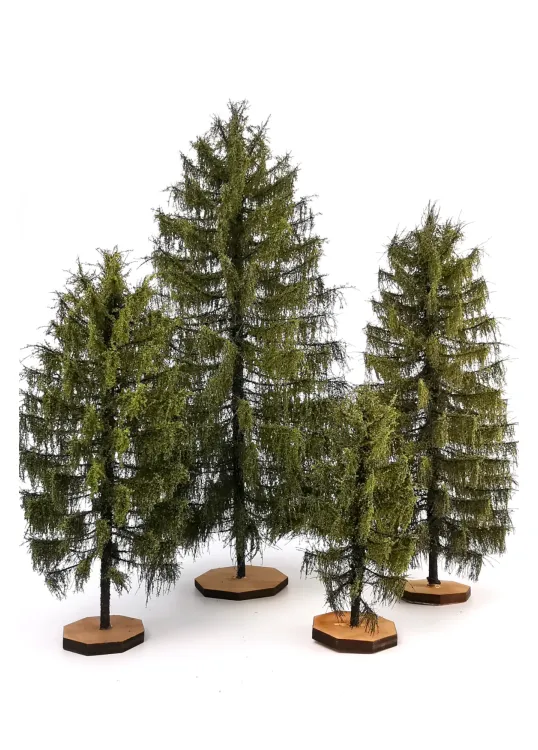Larch Tree Model 20-22 cm
Larch Tree Model 20-22 cm is a part of Primo Models Tree Line Collection. They are high-quality handmade trees for creating natural and realistic model scenery within layouts and dioramas. Each tree is uniquely made with its own style of branching and various shapes, creating a more natural landscape. The diverse and authentic characteristics of every individual tree enable you to create attractive, breathtaking and well-scaled model scenery, every time. Natural colours and realistic textures make these trees the ideal choice for ambitious modellers and collectors.
Each model tree is robust, durable, sustainable, 100% handmade and built to last. The foliage and leaves on these trees are carefully glued to minimise wear and tear, ensuring long life and a realistic appearance for years to come. Through our own research and partner advice, We only use sustainable and carefully selected materials which have been tried and tested over a period of time, to create long lasting, realistic and high quality models.
Note: In order to achieve a more natural, and realistic looking tree line, we recommend that you vary your mix with different size ranges of our trees, as well as our Primo Bushes range.
Is the Larch Tree Model 20-22 cm right size for your layout or diorama ?
We hope that the information we have provided in this description will help you in creating a more realistic and natural scale model scenery. Thanks to the support and advice provided to us from model railway layout builders and military model fans. We have developed most of our miniature trees in four different sizes, of which, you can find in our shop.
IMPORTANT: If you can’t find your desired size of a tree, let us know and we will try to prepare a custom order for any tree size you may need. Feel free to contact us at info@primomodels.co.uk
Our model trees can be used in several popular scales such as; 1:220 z gauge, 1:160 n scale, 1:100 architecture models, 1:87 ho scale, 1:76 oo gauge, 1:48 dollhouses, 1:45 o gauge, 1:35 Military models, 1:32 scale and occasionally 1:22.5 G Scale as well as many other wargaming and tabletop figure collection scale models in between.
Real size of our “Larch Tree Model 20-22 cm” when used in different model scales.
To see the real size of the tree model in your layout, diorama or architectonic project scale look at the table below.
Real size in scales (20-22 cm):
Scale | Meters | Feet
Min | Max | Min | Max
1:160 | 28.8 | 32.0 | 94.5 | 105.0
1:148 | 26.6 | 29.6 | 87.4 | 97.1
1:120 | 21.6 | 24.0 | 70.9 | 78.7
1:100 | 18.0 | 20.0 | 59.1 | 65.6
1:87 | 15.7 | 17.4 | 51.4 | 57.1
1:76 | 13.7 | 15.2 | 44.9 | 49.9
1:72 | 13.0 | 14.4 | 42.5 | 47.2
1:45 | 8.1 | 9.0 | 26.6 | 29.5
1:35 | 6.3 | 7.0 | 20.7 | 23.0
1:32 | 5.8 | 6.4 | 18.9 | 21.0
Real Larch Tree History and Overview
General Growth Information
Family/Genus: Pinaceae/Laricoideae
Subspecies: There is around a dozen types of larch species and they are most often divided into three main groups: Eastern Larch, European Larch and Japanese Larch.
Geographical Location: Larch trees grow mainly in the extremely northern latitude with very cold temperatures. Larch can be found mainly in North America, Europe and Asia.
Habitat/Climate: The larch, if growing wild, will always try to make its home in high places where it can get enough light and open space to spread its branches. Rocky, cold mountain terrains are preferable.
Lifespan: The average lifespan is around 250 years, but it is not uncommon to find trees older than 500 years. It is believed that the oldest unnamed larch tree is located in the Alaskan forests and its age is estimated at almost 2000 years old. The two oldest larch trees in Britain were planted in 1732 by the Cathedral of Dunkeld.
Height: Larch trees, depending on the species, grow up to between 24 to 42 metres tall ( 80 – 140 feet). It is believed that a Larch called “Gus” from the USA is the tallest of them all. It’s height is 50 metres ( 163 feet) and the crown diameter is a bit over 10 meters (34 feet).
Fruits/Seeds: Larch seeds, immature cones and buds are important elements in the natural food chain, feeding animals like squirrels and forest birds. Cones typically take a few years before drooping down.
Additional Interesting Information
Primary Uses: Larch trees are considered to be very hard and durable wood. Main reasons for its choice over other wood types are its toughness, waterproof qualities and knot-free structure. Because of those qualities, its often chosen for yachts, fences, coffins and general construction use.
Traditional Uses: Ages ago, heated larch flowers were used as herbal medicine. In Central and Northeastern Asia, women struggling with fertility issues found Larch held special significances. It was believed that spending the night under a larch would help with conceiving a baby. In European folklore, Larch was used as protection against enchantment and evil spirits.
Other Info: The Tamarack (Larch) can survive temperatures as extreme as -70℃. Some species of Larch can be cultivated as bonsai. Pillars of larch wood are what hold the famous city of Venice above water. Larch was brought to Britain in the early 17th century. Larch is a rare conifer type that is deciduous rather than evergreen like most conifers.

